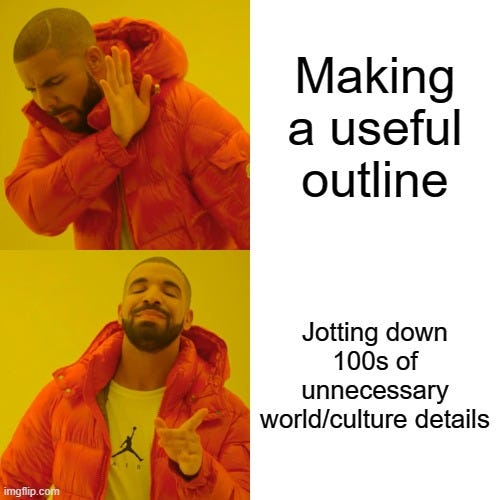
Part One: What is worldbuilding?
Okay, let’s get into it with some generalizations.
Worldbuilding is what creative writers do when they form the framework that contains their story. It includes everything from the layout of the furniture in someone’s bedroom and the geography of the city they live in, to the languages spoken by their fellow inhabitants and the technological capabilities of the society that surrounds them. It’s the details that bring a story to life–the thing that separates a decent tale from a life-changing epic adventure that every single one of the reader’s friends must read immediately. It gives a story depth and richness and the sense that there is more beyond the page, that readers could find a pulsing, vibrant existence beyond the edges of the pages they are reading.
J.R.R. Tolkien explains the “magic” of reading in his essay “On Fairy Stories” when he likens what happens to readers who imagine a story to an act of enchantment. The author has written the words, but the readers are ones who transform those markings on a page into scenes in their imaginations. He calls this enchantment an act of subcreation; that is, the readers are “creating” the story for themselves based on the words of the author. This can only happen, he insists, when the world of the story they are reading is believable; in fact, the Secondary World (the world inside the story) must be as believable as the Primary World in which the readers live. A common way to describe what happens when readers engage in this act is the “willing suspension of disbelief.” The idea is that reader willingly suspend their natural disbelief when they enter a story–they know billionaires don’t act like that, or that swords aren’t sentient, or that cars can’t fly, or that word can’t alter the physical world–but for the sake of the story, they “suspend” that “disbelief” long enough to enjoy the story in that world. Tolkien doesn’t like this approach, insisting that if the world is done properly, if the nearly elvish craft of enchantment has been done well, the readers won’t have to suspend their disbelief–they will believe. Fr the time they spend immersed in the pages of that story, they will fall into that world naturally and completely.
How does one accomplish that? According to Tolkien, by having a completely built world in the background of your story. You should know every detail, every crevice, every whisper. That said, Tolkien had reams of journals and maps and lineages and histories for Middle Earth. Do you have to do all that? Of course not. But it should look like you have. After all, unless they read your worldbuilding guide, readers don’t see your entire world anyway–they just see the parts that connect to the story you are telling–but they should believe that the rest of the world is there, the ice beneath the tip of the iceberg hidden beneath the water. If you are confident and consistent in your details, that iceberg will feel massive to readers.
So, how can you provide this magical transformative experience for your readers? Do your homework. Build your world before you step into it (or before you finish stepping out of it on that last page!) so readers feel the world lives beyond the moments they see in the story.
Looking for some help along the way? Check out The General Guide to Worldbuilding and get serious about your world!

